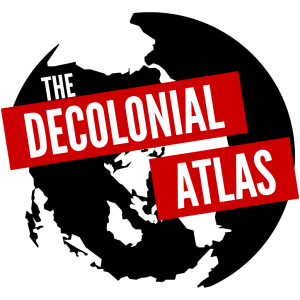

“How inappropriate to call this planet Earth, when clearly it is Ocean.” – Arthur C. Clarke
In English, earth means ground, soil, and land, but it also means our world – Planet Earth. From Hebrew to Spanish, to Zulu, to Cree – this dual meaning is common in many, if not most, of the world’s 7,000 languages. In many cultures, it also takes on a more spiritual meaning. Think of the Norse goddess Jörð, the Hindu goddess Bhumi, or the Greek goddess Gaia and her Roman equivalent Terra – all humbly named for dirt. It’s perhaps not surprising when you consider that in the evolution of language, the word for land predates organized religion and planetary science. This planet might be 71% water, but we are a terrestrial species. The surface beneath our feet, which we may or may not worship, is earth.
Many languages, however, have separate words for earth and Earth. Often, the planet bears a maternal name, as in Nabgwana meaning mother of abundance in Kuna, or Nahasdzáán meaning our mother in Navajo, and in many other cultures that feature Father Sky and Mother Earth deities.
Throughout the Muslim world, the planet’s name is a reflection of the theological belief that Earth is the land of the living, while heaven is the home of the divine. The Arabic name, Dunyā, translates to lower place, as opposed to heaven, the higher place. Meanwhile, earth as in ground or land is called ʾarḍ in Arabic. In Indonesia, the predominately Muslim Sundanese people call it Marcapada – the mortal place.
To an alien visitor, it might be surprising that we have so many names and understandings of our own planet, but that’s just the human way. Observing it from space, one might just call it as Carl Sagan did – the Pale Blue Dot. But for us humans here on Earth, it is the sacred ground, the holy mother, the land of life.
Mapped here are some of the many names for our planet. 250 languages are represented in all.
The map itself is Pacific-Centered (150°E) and South-Up. It uses the Equal Earth projection, a beautiful equal-area projection developed in 2018.
As always, Decolonial Atlas maps can be reused under the Decolonial Media License 0.1. Feel free to print them yourself, and send us your photos of them out in the real world!

In response to Mr. SAGAN, I often refer to earth as the Blue Pearl, fot that is how it looks in pictures from space.
LikeLike
[…] 2021 Abbildung 1: Symbolbild “One Planet, Many Names” von Jordan Engel (20.04.2020); Quelle: https://decolonialatlas.wordpress.com/2020/04/20/one-planet-many-names/ [Zugriff am 26.01.2021] (The map itself is Pacific-Centered (150°E) and South-Up. It uses the […]
LikeLike
[…] Originally posted on The Decolonial Atlas […]
LikeLike
It is true that one planet many names which means that we all belong to this planet mother Earth . Therefore we all have a duty to save the planet as it is said that we left with 12 years to save the planet which means that we need to work together to save our lovely and only planet we all claim to belong to. I think tree planting will be a way to save our planet therefore let us prepare to start now not later. Regards Solomon Solly Mbiko.
LikeLike
[…] Read the whole piece […]
LikeLike
Reblogged this on ecoartscotland and commented:
In preparation for the 50th anniversary of Earth Day we are sharing this evocative and provocative post from Decolonial Atlas…
LikeLike